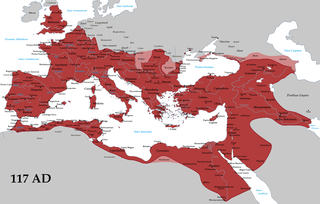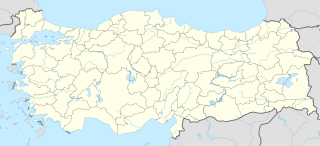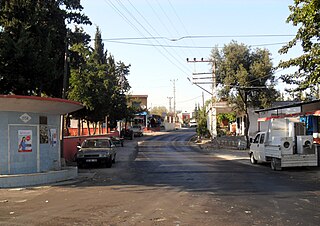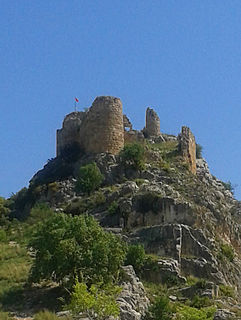
Kuzucubelen Castle is a castle ruin in Mersin Province, Turkey.

The Mersin Province is a province in southern Turkey, on the Mediterranean coast between Antalya and Adana. The provincial capital is the city of Mersin and the other major town is Tarsus, birthplace of St Paul. The province is part of Çukurova, a geographical, economical and cultural region, that covers the provinces of Mersin, Adana, Osmaniye and Hatay.

Turkey, officially the Republic of Turkey, is a transcontinental country located mainly on the Anatolian peninsula in Western Asia, with a smaller portion on the Balkan peninsula in Southeast Europe. East Thrace, the part of Turkey in Europe, is separated from Anatolia by the Sea of Marmara, the Bosphorous strait and the Dardanelles. Turkey is bordered by Greece and Bulgaria to its northwest; Georgia to its northeast; Armenia, the Azerbaijani exclave of Nakhchivan and Iran to the east; and Iraq and Syria to the south. Istanbul is the largest city while Ankara is the capital. Approximately 70 to 80 per cent of the country's citizens identify as Turkish. Kurds are the largest minority; the size of the Kurdish population is a subject of dispute with estimates placing the figure at anywhere from 12 to 25 per cent of the population.
At 36°50′31″N34°25′57″E / 36.84194°N 34.43250°E it is in Mezitli ilçe (district) of Mersin Province. Its distance to Mersin is 34 kilometres (21 mi) It is situated to the west of the village with the same name. Although the exact construction date is unknown it is a medieval castle and was used during the Roman or Byzantine Empire eras. [1] It was one of the smaller fortifications used to control the roads.

Mezitli is a municipality and district governorate in Greater Mersin, Turkey. Mersin is one of 30 metropolitan centers in Turkey with more than one municipality within city borders. Now in Mersin there are four second-level municipalities in addition to Greater Mersin (büyükşehir) municipality.

The Roman Empire was the post-Republican period of ancient Rome, consisting of large territorial holdings around the Mediterranean sea in Europe, North Africa and West Asia ruled by emperors. From the accession of Caesar Augustus to the military anarchy of the third century, it was a principate with Italy as metropole of the provinces and its city of Rome as sole capital. The Roman Empire was then ruled by multiple emperors and divided into a Western Roman Empire, based in Milan and later Ravenna, and an Eastern Roman Empire, based in Nicomedia and later Constantinople. Rome remained the nominal capital of both parts until 476 AD, when it sent the imperial insignia to Constantinople following the capture of Ravenna by the barbarians of Odoacer and the subsequent deposition of Romulus Augustus. The fall of the Western Roman Empire to Germanic kings, along with the hellenization of the Eastern Roman Empire into the Byzantine Empire, is conventionally used to mark the end of Ancient Rome and the beginning of the Middle Ages.

The Byzantine Empire, also referred to as the Eastern Roman Empire or Byzantium, was the continuation of the Roman Empire in its eastern provinces during Late Antiquity and the Middle Ages, when its capital city was Constantinople. It survived the fragmentation and fall of the Western Roman Empire in the 5th century AD and continued to exist for an additional thousand years until it fell to the Ottoman Turks in 1453. During most of its existence, the empire was the most powerful economic, cultural and military force in Europe. "Byzantine Empire" is a term created after the end of the realm; its citizens continued to refer to their empire simply as the Roman Empire, or Romania (Ῥωμανία), and to themselves as "Romans".
The gate of the two-storey rectangular-plan castle is on the north west side. Although the walls are standing the arches were demolished. [1] The masonry and design indicate that it was built in the 12th or 13th century during the period of the Armenian Kingdom of Cilicia. The fortification was surveyed in 1981. [2] Located between Tece Castle and Başnalar this site guarded a route from the Mediterranean Sea to Cappadocia. [3] There are also ruins of a church, a monastery and a cistern around the castle. [4]

The Armenian Kingdom of Cilicia, also known as Cilician Armenia, Lesser Armenia, or New Armenia and formerly known as the Armenian Principality of Cilicia, was an Armenian state formed during the High Middle Ages by Armenian refugees fleeing the Seljuk invasion of Armenia. Located outside the Armenian Highlands and distinct from the Kingdom of Armenia of antiquity, it was centered in the Cilicia region northwest of the Gulf of Alexandretta.

Tece Castle is a ruined castle in Mersin Province, southern Turkey.

The Mediterranean Sea is a sea connected to the Atlantic Ocean, surrounded by the Mediterranean Basin and almost completely enclosed by land: on the north by Southern Europe and Anatolia, on the south by North Africa and on the east by the Levant. Although the sea is sometimes considered a part of the Atlantic Ocean, it is usually referred to as a separate body of water. Geological evidence indicates that around 5.9 million years ago, the Mediterranean was cut off from the Atlantic and was partly or completely desiccated over a period of some 600,000 years before being refilled by the Zanclean flood about 5.3 million years ago.















